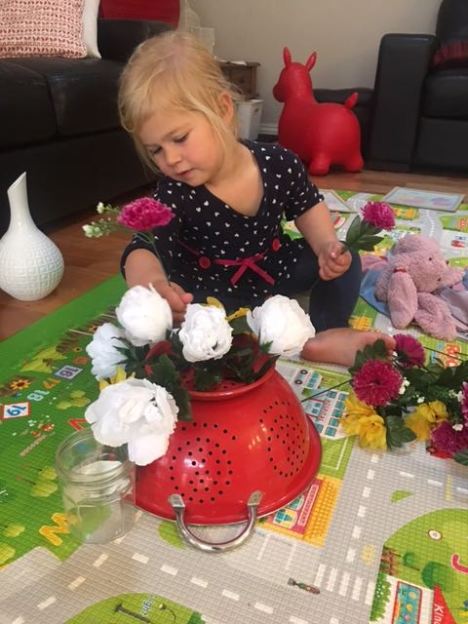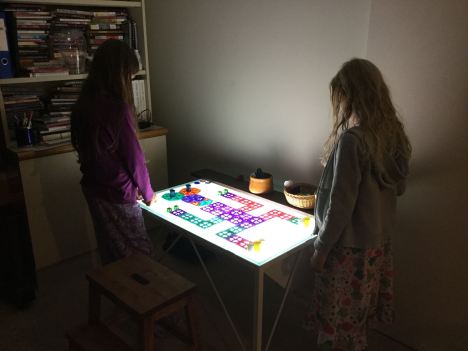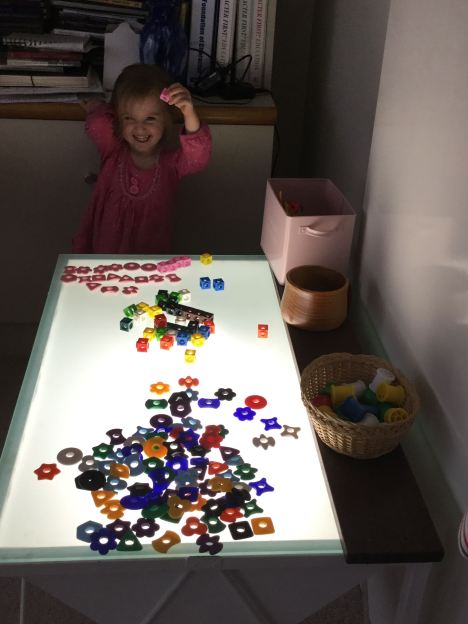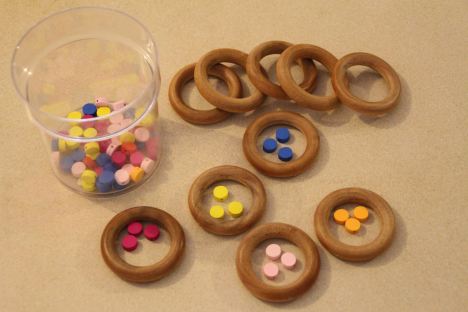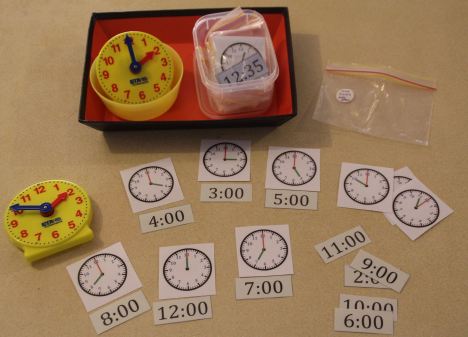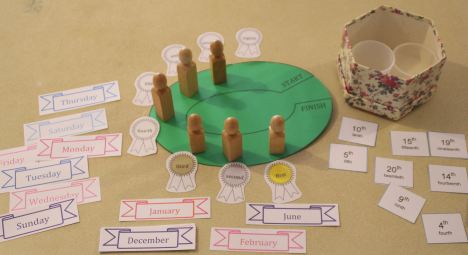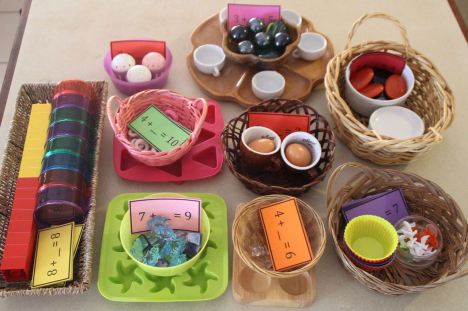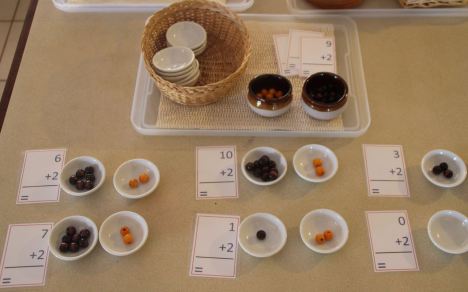Our latest invitation to play at the light table was a simple selection of colourful plastic shot glasses. For the first few days only the glasses themselves were on offer and it was interesting to see the different ways each age group approached their play.
I had to resist the urge to show the younger children how to build with them, knowing that given enough time they would figure it out for themselves. They initially used the glasses to construct in a way I had not thought of; laying them down and creating 2D style robots and spaceships. My 2 year old was quite content stacking and unstacking the cups and sorting them by colour. There was some counting as they wondered how many layers they would need to use exactly 100 cups in a tower.
After a few days of playing and constructing with just the cups themselves, I added 3 plastic rulers and some see-through plastic cars. This opened up a whole new realm of play as the older children in particular worked together to make balancing structures and car garages.
There are many simple “hacks” out there for making your own inexpensive light table; see this post for links to my Pinterest page.
Filed under: Light table play | Tagged: home-made Montessori, invitations to play, light table, Regio Emilia provocation | Leave a comment »











